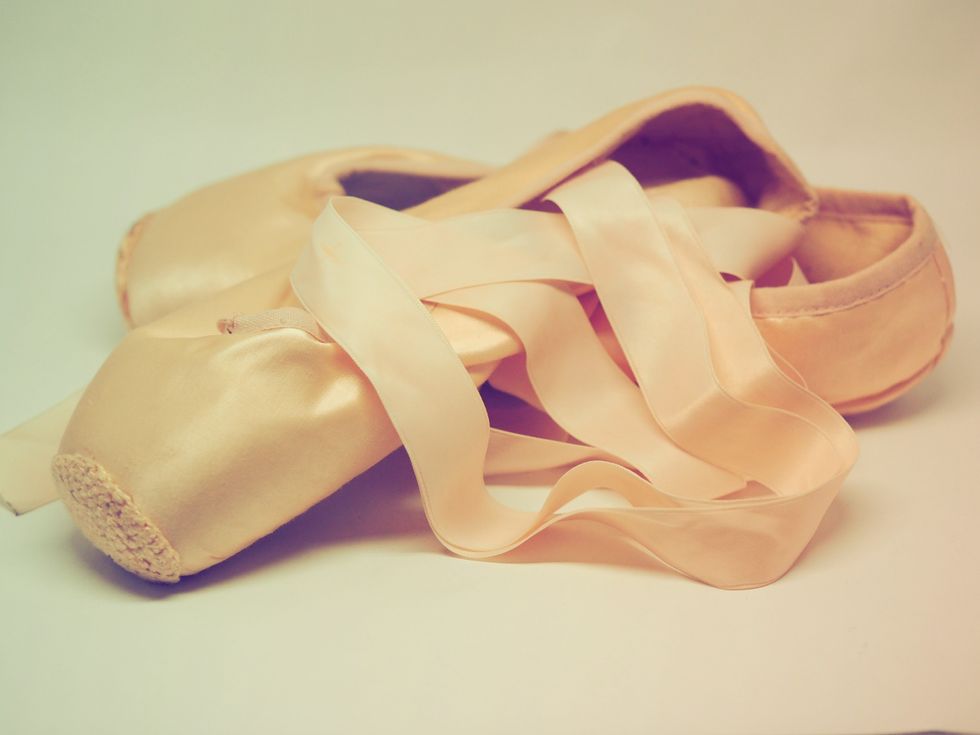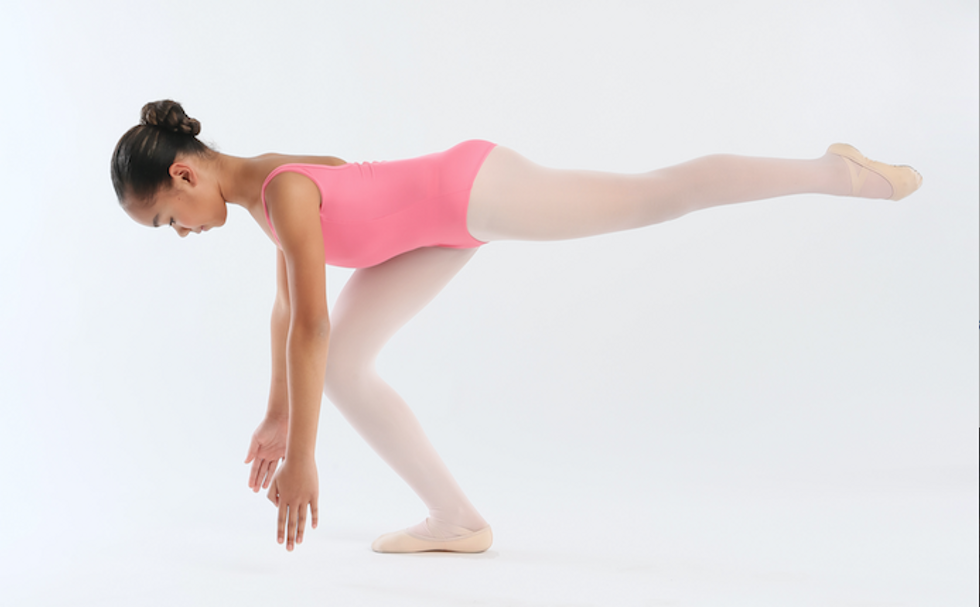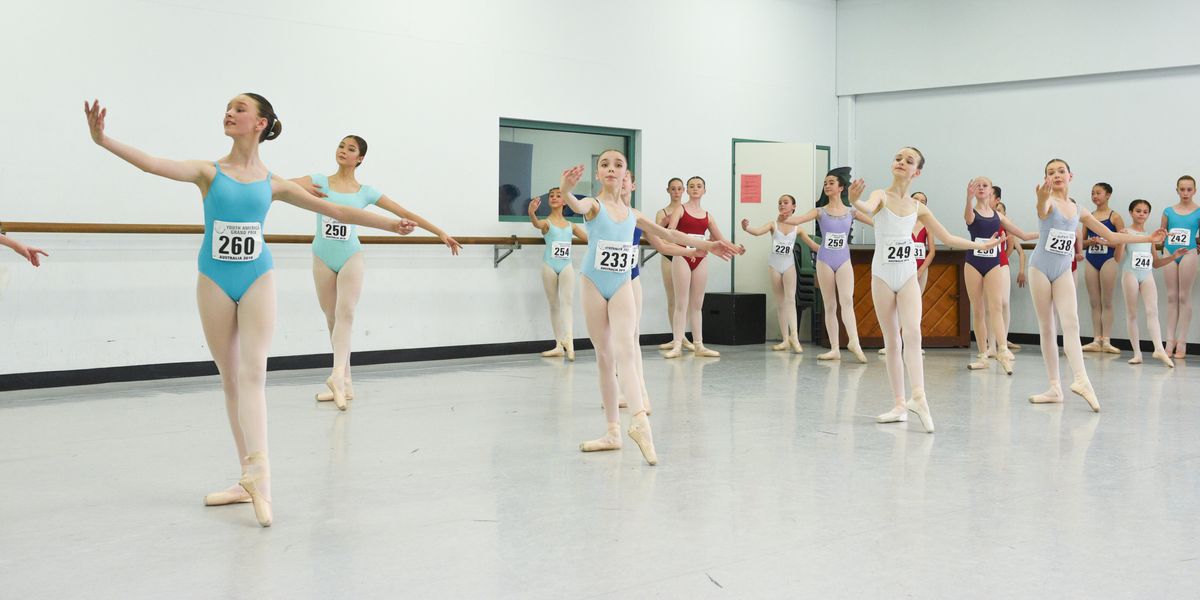How Young Is Too Young For Pointe Work?
In 2018, the Youth America Grand Prix added a rule: For participants under age 12, performing on pointe became strongly discouraged. For those under 11, it became prohibited.
The competition organizers made these changes after jury members, teachers and others raised concerns about students being pushed to perform on pointe too early. Larissa Saveliev, YAGP co-founder and director, says, “Ten years ago we didn’t have to have these rules because nobody was progressing that fast.”
As ballet prodigies get younger and their abilities more extraordinary, many are asking, How young is too young to let their bodies dance on the tips of their toes?
 Different techniques introduce pointe shoes at different ages. Photo by Jess Watters/Unsplash
Different techniques introduce pointe shoes at different ages. Photo by Jess Watters/Unsplash
Most ballet teachers believe that pointe work is not suitable for students under 11 years old. Some believe that even 11 is pushing it. “The earliest age a child should be dancing on pointe is 11. However, 12 or 13 is more common,” warned the Royal Academy of Dance in a 2016 statement. RAD alumni who dance with The Royal Ballet, The Washington Ballet and Staatsballett Berlin chimed in with their support.
But the question is a complicated one for a number of reasons. First, there has not yet been extensive research to prove that beginning pointe work earlier than 11 is damaging. Second, chronological age and biological age can differ significantly. “Age 12 could be a maturation of age 9 or age 15 depending on the person,” says Megan Richardson, clinical specialist at NYU Langone Health’s Harkness Center for Dance Injuries.
“When people say you cannot do pointe work before 11, there’s a big argument depending on what system,” says Valentina Kozlova, former Bolshoi Ballet and New York City Ballet principal dancer and director of the Valentina Kozlova Dance Conservatory of New York. At the Vaganova Ballet Academy, children start pointe work around 10 or 11 years old. But there is a catch: In Russian institutions where Vaganova is taught, young girls are carefully chosen based on their physiques. Once accepted, they train steadily every day with highly qualified teachers to achieve their goal of becoming professional ballet dancers.
Russian dancers who settle in America often continue to teach a version of the Vaganova method in private schools. But in the U.S., ballet schools cater to a broad range of body types and goals. Most children do ballet as recreation. Only a few pursue their training with the level of dedication required of true Vaganova formation. “Here, one day they come and the next they don’t,” says Kozlova. “With inconsistency, it is very hard to put a body on pointe.”
Without a codified curriculum, teachers tend to assess pointe readiness functionally, says Richardson: “I like the way her foot points; I like the line of her tendu; I like the way she holds her torso.”
Some teachers develop their own indicators over time. “I look at frappé, that they are not wiggling their supporting side, and the coordination of fondu is very important, coming down between the rise and the plié,” says Cynthia Harvey, artistic director of American Ballet Theatre’s Jacqueline Kennedy Onassis School in New York City. “In dégagé, I personally like that the toes are united, and that they feel the toes on the way down.”
The problem of relying on subjective assessment is that not all teachers are equally experienced or particular. Staff at the Harkness Center for Dance Injuries suggests three objective tests teachers can use in conjunction with their subjective assessments. “It gives them a check box. Yes or no. It’s black or white,” says Richardson. “If the students don’t pass these tests, teachers can say, ‘Let’s look at this again after some more training.’ ”
 One of Harkness’s tests asks students to perform at least four out of five pliés in a horizontal “airplane” position while maintaining neutral alignment of the lower body. Pictured: Kylie Williams of Ballet Academy East demonstrating the Airplane Test, photo by Jayme Thornton.
One of Harkness’s tests asks students to perform at least four out of five pliés in a horizontal “airplane” position while maintaining neutral alignment of the lower body. Pictured: Kylie Williams of Ballet Academy East demonstrating the Airplane Test, photo by Jayme Thornton.
However, even if a 9- or 10-year-old passes these tests, it does not automatically mean they are ready. Pointe work increases the forces placed on a foot by up to 12 times their body weight and prepubescent bones are more vulnerable to injury. “Is a 9-year-old more at risk for premature growth plate closure than an 11-year-old? Yes, possibly. That’s the bottom line,” says Dr. Selina Shah, a sports medicine physician who treats dancers in Walnut Creek, California.
In 2017, Shah published the first reported case of premature growth plate closure from dancing on pointe in a 13-year-old who had begun pointe work at age 10, resulting in a visibly shortened second toe. “It may be more common than we realize,” Shah says. “I don’t think it is something to worry about, but I do think it is something to be aware of.”
Shah is not inclined to give an age for beginning pointe. Rather, she says, it is about evaluating a combination of factors. “It depends on their technique, strength, postural control, flexibility, maturity to handle corrections and listen to what the teacher is saying,” she says. “It also depends on how the introductory pointe class will be structured.”
It’s one thing for a young student to do slow rises on pointe facing the barre, learning how to roll through the foot and control coming down for 10 minutes at the end of class. Dancing on pointe is another thing altogether. When American Ballet Theatre soloist Skylar Brandt went on pointe at 9 1/2 years old, Kozlova built up her strength very cautiously. “I was dying to do more,” Brandt recalls. “It was almost torturous to take them off after only 10 minutes.” Yet Brandt thinks her progression was well-managed: She has never had foot or ankle injuries, and is comfortable in her custom-made Capezio pointe shoes.
 As a student, Skylar Brandt couldn’t wait to do more pointework. Today, she’s grateful her progression was slow and steady. Photo by Rosalie O’Connor, courtesy ABT.
As a student, Skylar Brandt couldn’t wait to do more pointework. Today, she’s grateful her progression was slow and steady. Photo by Rosalie O’Connor, courtesy ABT.
Today, there is growing concern that the competition circuit and social media encourage “baby ballerinas.” We’ve all watched, awestruck, YouTube videos of 9/10/11-year-olds performing variations like “Black Swan” or “Grand Pas.” It is extraordinary that they can do it. But aside from asking whether it is appropriate or not, we need to think of the hours of repetitive loading on those young bones: How old were they when they started pointe, and how many hours do they spend rehearsing?
Saveliev understands the role that YAGP and other such competitions play in encouraging young prodigies to push further and therefore the responsibility they bear to call for restraint. “We exist to give a platform for the students to show themselves off,” she says. “We don’t want to stop them. We just want them to have a second to breathe, to take some more time, perfecting steps and quality.”
Kids and their parents can be impatient. “The most common complaint that I hear from teachers is when they explain to a student they are not ready to go on pointe and the student leaves for another studio where they will be placed on pointe,” says Sarah Haslock-Johnson, a continued professional development tutor for RAD who teaches a module on introducing pointe work. In her experience, if the parent is educated about the pointe process, they are more likely to support the teacher’s decision. But there are other ways to feed a child’s ambition, like enrolling them in extra classes.
“I always say that you have years to be in a pair of pointe shoes and the urgency to accomplish this at such a young age is completely unnecessary,” says Haslock-Johnson. Ballet dancers have their whole career to spend on pointe. It’s best to get the foundations right.




